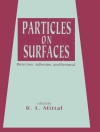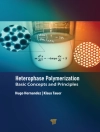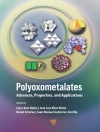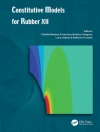Bridging the gap between the well-known technological description of gasification and the underlying theoretical understanding, this book covers the latest numerical and semi-empirical models describing interphase phenomena in high-temperature conversion processes.
Consequently, it focuses on the description of gas-particle reaction systems by state-of-the-art computational models in an integrated, unified form. Special attention is paid to understanding and modeling the interaction between individual coal particles and a surrounding hot gas, including heterogeneous and homogeneous chemical reactions inside the particle on the particle interface and near the interface between the solid and gas phases.
While serving the needs of engineers involved in industrial research, development and design in the field of gasification technologies, this book’s in-depth coverage makes it equally ideal for young and established researchers in the fields of thermal sciences and chemical engineering with a focus on heterogeneous and homogeneous reactions.
Innehållsförteckning
Preface
MODELING OF GASIFIERS: OVERVIEW OF CURRENT DEVELOPMENTS
Numerical Modeling in Engineering
CFD-Based Modeling of Entrained Flow Gasifiers
Benchmark Tests for CFD Modeling
GASIFICATION OF SOLIDS: PAST, PRESENT AND FUTURE
Introduction
Historical Background
Types of Gasification Reactors
Trends in Gasifier Development
Derived Challenges for Research
MODELING OF MOVING PARTICLES: REVIEW OF BASIC CONCEPTS AND MODELS
Introduction
Soft-Sphere Model
Hard-Sphere Model
CD AND Nu CLOSURE RELATIONS FOR SPHERICAL AND NON-SPHERICAL PARTICLES
Literature Review
Model Description
Code and Software Validation
Porous Particles
Non-Spherical Particles
SINGLE PARTICLE HEATING & DRYING
Nonporous Spherical Particle Heating in a Stream of Hot Air
Heating of a Porous Particle
Spherical Particle Drying in a Stream of Hot Air
Conclusions
UNSTEADY CHAR GASIFICATION/COMBUSTION
Introduction
Modeling Approach
Numerics & Code Validation
Advices for Beginners
Analytical Methods
INTERFACE TRACKING DURING CHAR PARTICLE GASIFICATION
Interface and Porosity Tracking for a Moving Char Particle
3D Interface Tracking for a Porous Char Particle in a Kinetic Regime
Conclusions
PSEUDO-STEADY-STATE APPROACH FOR CARBON PARTICLE COMBUSTION/GASIFICATION
Particle-Resolved CFD Simulations: Spherical Particles
Particle-Resolved CFD Simulations: Nonspherical Particles
Conclusions
Setup of Heterogeneous Reactions in ANSYS FLUENT
PORE-RESOLVED SIMULATION OF CHAR PARTICLE COMBUSTION/GASIFICATION
Introduction
Model Assumptions and Chemistry
Small Porous Particle: 90 µm
Large Porous Particle: 2mm
3D Simulations under Gasification Conditions
Conclusions
SUBGRID MODELS FOR PARTICLE DEVOLATILIZATION-COMBUSTION-GASIFICATION
Subgrid Model for the Devolatilization/Combustion of a Moving Coal Particle
Novel Intrinsic Submodel for Gasification of a Moving Char Particle
NEW FRONTIERS AND CHALLENGES IN GASIFICATION TECHNOLOGIES
Introduction
Trends in Gasifier Design
Future Gasifier Simulations
Index
Om författaren
Petr A. Nikrityuk is an associate professor at the Department of Chemical and Materials Engineering, University of Alberta (Uof A), Canada. Before taking his current position at Uof A, Petr Nikrityuk was the head of the research group Interphase Phenomena within the Center for Innovation Competence VIRTUHCON at the Technische Universität Bergakademie Freiberg (TUBAF), Germany. He studied mechanical engineering at the Moscow Aviation Institute (MAI), where he obtained his Ph D on the topic of mathematical modeling of thermal processes. Before taking his research group leader position in Freiberg, Petr Nikrityuk worked as software developer in the field of computational fluid dynamics and as a post doc fellow in the Institute for Aerospace Engineering at the Dresden University of Technology.
Bernd Meyer is the Director of the Department of the Energy Process Engineering and Chemical Engineering at the Technische Universität Bergakademie Freiberg (TUBAF), Germany. Having obtained his academic degrees from TUBAF, he spent most of his career working in research and development in gasification and power plant technologies before taking up the appointment as a professor at TUBAF, Chair of Energy Process Engineering and Thermal Waste Treatment (EVT). He has been a member of the Saxonian Academy of Sciences, and Rector of the TUBAF since 2008. Prof. Meyer is author and coauthor of more than 90 patents in the field of gasification and related technologies.












